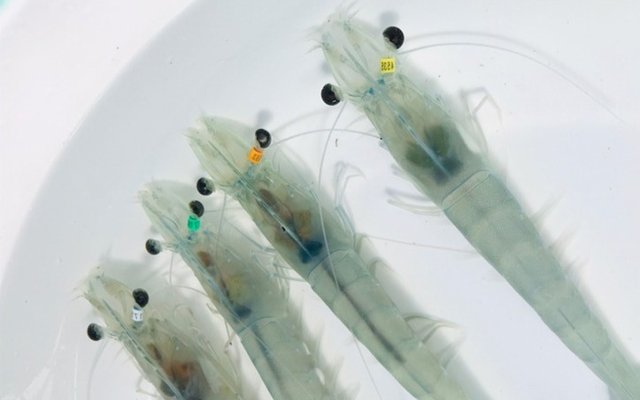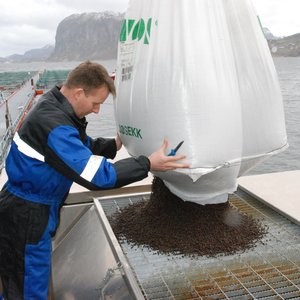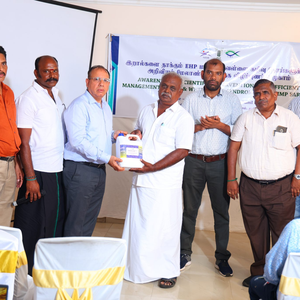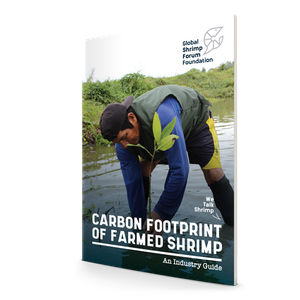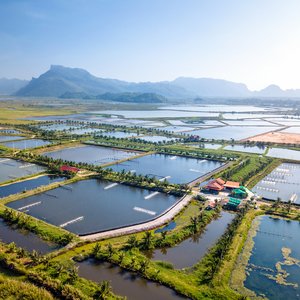SyAqua Group recently appointed Fred Kao as chief executive officer. In 2022, Ocean 14 Capital Fund signed an agreement to acquire a controlling stake in the shrimp genetics and nutrition company and in his new role, Kao is responsible for developing and implementing the strategic vision of the organization.
With a 20-year history in the genetics industry, Kao has a proven track record of successfully growing businesses and building teams. Prior to joining SyAqua, he held roles with Amlan International – US, Cobb-Vantress – China and Aviagen – UK & US. Hatchery Feed & Management talked with Kao to get some insights on where the company is today and future prospects for its genetics and nutrition hatchery businesses.
Shrimp genetics
The shrimp genetics business is focused on its balance line. With a Genetic Nucleus (GN) in Thailand and two Breeding Multiplication Centers (BMC) in Thailand and in the U.S., the company is currently running at full capacity.
SyAqua main markets are China, India, Thailand, Indonesia and Malaysia. The company also has a presence in Vietnam. “We made a strategic decision recently not to push hard in Vietnam because the company doesn’t have enough production capacity. We are overbooked for the next eighteen months at least until we can expand our facilitues,” Kao said.
“Our presence in China has strengthened for the past 3-4 years. We were challenged by the COVID-19 pandemic but we are recovering our position in the country. We are looking to sell roughly 70,000 broodstocks this year, a 30% increase from the past two years,” Kao said. The move of China toward more sustainable shrimp farming systems is helping the company. “The trend towards the use of greenhouses in China is changing the dynamic of the market and that is why our market share has soared in the last six months,” Kao said.
China used to focus on fast growth with speed lines dominating the market. In the past 4-5 years, the focus switched to resistant lines. “Our balance line has shown consistently better survivability compared to the speed lines. We used to struggle against the resistant lines, especially in the Northeast and inland locations, but now we are starting to get more orders from those regions.” Kao explained. Due to growing sales in the Chinese market, the company is considering the possibility of establishing a BMC in the country with the right partners.
“In India, due to supply limitations and restrictions from the country, we are supplying 40,000 broodstock on a yearly basis. We could go up to 70,000-80,000 broodstock but right now, we don’t have the production capacity,” Kao said. “Demand for SyAqua broodstock is high due to the observed benefits of our Balance Line to Indian farmers. SyAqua customers report reduced impact of White Feces Disease, improved survival, good growth and low FCR. This makes SyAqua a profitable choice, especially useful in these times of low farm-gate prices.”

Credits: SyAqua
In Thailand, the company has long been a pioneer in the balance line. “We are still small (10% market share), but we could be in the 20%-plus range in the next 36 months. The #1 competitor’s genetics in Thailand grows very fast but our survivability is 15-20% higher. At the moment, the farm gate price for 100-count shrimp is BHT 90/kg (USD 2.60/Kg) and 60-count up to BHT 120/kg (USD 3.40), and the reason why farmers are switching is that the fast growth lines are uneconomic at these sizes due to lower survival,” Kao said.
Due to the growing demand, the company is planning to expand its production capacity in Thailand but meanwhile, is doing modifications at its BMC in Thailand for a 30% increase. In the US, the company has completed a 33% increase in capacity in March and is building a second site in the US that will give the company another 65-70% increased capacity. The company is also completing the BMC in Indonesia which will only serve the domestic market due to the country's export restrictions.
In terms of new developments, the company is taking advantage of Kao’s background in livestock genetics. “I have 20 years of experience in chicken genetics which is years ahead of aquaculture genetics selection processes. We are discussing different possibilities, such as upgrading the current selection criteria, and potentially having a second line down the road. We want to stay ahead of the curve, the same as we did with the balance line being one of the first companies serving it. We are not only looking for speedy, resistant or balanced lines, we want to focus on tailor-made lines, for example, for specific regions and conditions,” Kao explained. “Even with the expansion plan, we will still be at full capacity and we don’t want to jeopardize our genetic gain just for market share. We are focusing on our genetic selection criteria and keep the same genetic gain, if not more.”
Hatchery feeds
With a feed mill in Malaysia, the company is also running at full capacity. The company's current production capacity is more than 200 tons per year of hatchery feeds with high, medium and low ranges of feeds. India is the main market followed by Thailand and Indonesia. The company also commercializes its hatchery feeds in the Middle East, Pakistan and Bangladesh.
The current context with increased costs of ingredients and labor has impacted the company that increased its feed prices in April. To avoid the dependency on raw materials that are hard to get, such as fishmeal in the coming months, and price increases, the company is developing new products that are innovative and more specific to customer needs.
The company is also open to investing in new feed developments. “If there is a specific need in the market that is big enough for us to invest in, we will,” Kao stated.
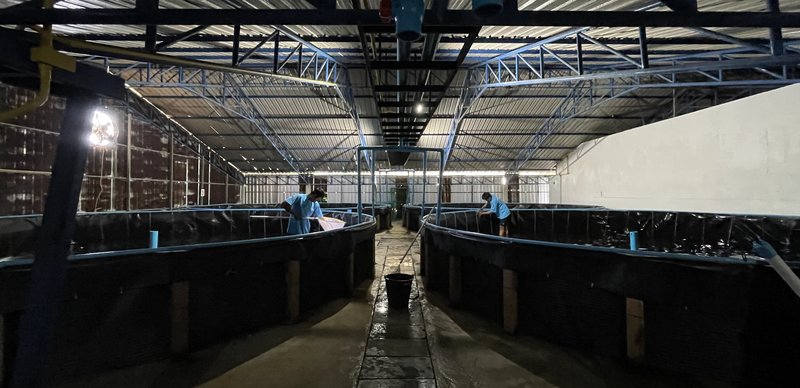
Credits: SyAqua
Ocean 14 investment
In 2022, Ocean 14 Capital Fund signed a deal to purchase a controlling stake in SyAqua from Golden Springs Group (GSG). “Ocean 14 is not a private equity firm that comes in, invests, brings the company to a certain size and sells it. Ocean 14 invested in SyAqua because they are very interested in aquaculture and want to have an impact on the environment. If we grow shrimp faster with less feed, higher resistance and better survivability, it will improve the environment, and that makes a difference from the other investors. They are here to invest, understand the business and, at the same time, increase sustainability as their mission statement says,” Kao explained.
SyAqua holding company, PHT, based in Singapore, is a co-ownership between Golden Springs and Ocean 14. “In PHT, we have a four-stage process for SyAqua and we are facing phase three right now. Phase three aims to make sure the company is expanding, moving at the right strategic locations, following good practices, and maintaining Ocean 14’s Mission Statement,” Kao stated.
In the future and as part of phase four, the company aims to look for opportunities to acquire startups or be part of groundbreaking scientific innovations. “Phase four looks to innovative solutions to make the shrimp business more efficient,” Kao concluded.


